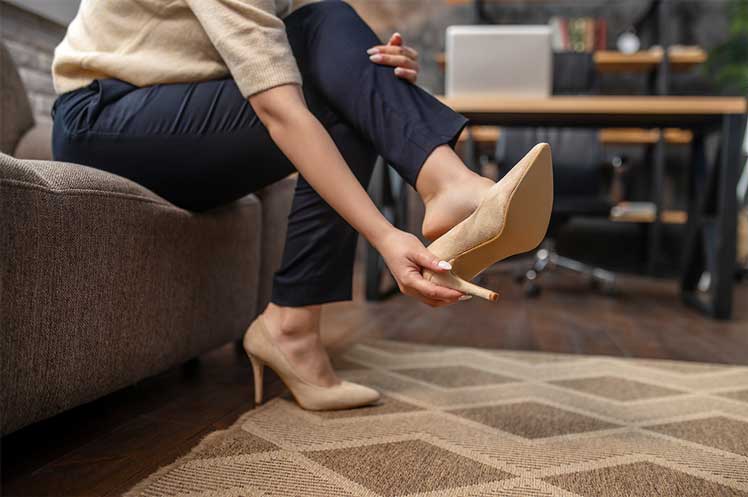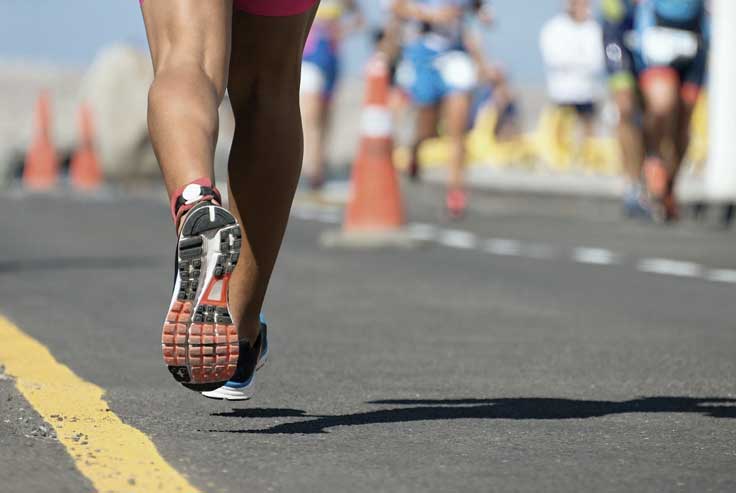
What is the role of heel height for the stress of the achilles when wearing. Here we are limiting our discussion to wearing a particular shoe while working out. And, I will not focus on heel height and reducing equinus forces as that has already been discussed. The Barefoot craze taught us some good principles that lowered heels, between no heel height (aka Zero Drop) and 6 mm heel drop (aka the difference between the height of the heel versus the height of the metatarsal area) that there were significant differences from traditional height shoes of 8 to 14 mm in general. These differences included both positive and negative effects on the body and the profession of Podiatry concluded that the lower the heel height produced:
- Potential Benefits for the metatarsals and knee
- Potential Negatives for the heel, shin and achilles (and we are focusing on the achilles now)
This article points to the foot and hip joint stress change when going from an elevated heel to a zero drop shoe.
This article points out that there are more ankle dorsiflexion moments with zero drop shoes.
This article also points out the increased ankle torque with zero drop shoes over traditional shoes.
And, I can summarize this all for you, more ankle dorsiflexion and stress with zero drop shoes, and more ankle plantarflexion with shoes that have heel heights. Also, more heel pressure and stress in zero drop and more ball of the foot stress in heeled shoes. We know however that runners adapt to stress in its various forms. I love, when treating runners, to have them vary their shoes so that the stresses each shoe puts on some part of their bodies is not worn day after day. This is how overuse works in a repetitive motion activity like running, or hiking long distances.

What are my general rules then to use these shoe variations to my patient’s advantage?
- If a patient has heel pain, I want to see when they feel better in a raised heel shoe (running, walking, or standing). The raised heel is typically to get the weight moving forward on their foot decreasing the time of weight on the heel area.
- If a patient has achilles pain (or shin pain), I want to get them in a heeled shoe also
- If a patient has ball of the foot pain, a zero or low heel drop shoe makes sense standing (to get the weight more on the heel), but it is more tricky with movement.
- If a person has ball of the foot pain with movement, the shoes have to be very individualized to the patient as shoe flexibility vs rigidity makes a difference, heel height can make a difference, and whether there is a rocker in the forefoot (even to the degree where the rocker is placed.
- If a patient has knee pain, I want them to experiment with heeled shoes vs zero drop shoes to see if the general rule holds true for them since diagnostically it has never been established which knee injuries (of the many) are helped by lowering the heel.
This does bring us to achilles pain and orthotic devices with and without heel lifts. If you go on the KevinRoot Medical website, they suggest a P1 device as your default. Other modifications are worked on based on the uniqueness of your patient. You can ask for a heel lift of 1/8 inch to 1/4 inch, but make sure it is on both sides, which can decrease the pull or stress on the achilles tendon both in standing or movement. This is a stable device with deep heel cups, something that really stabilizes the achilles tendon pulling it out of slight varus or valgus malalignments.






